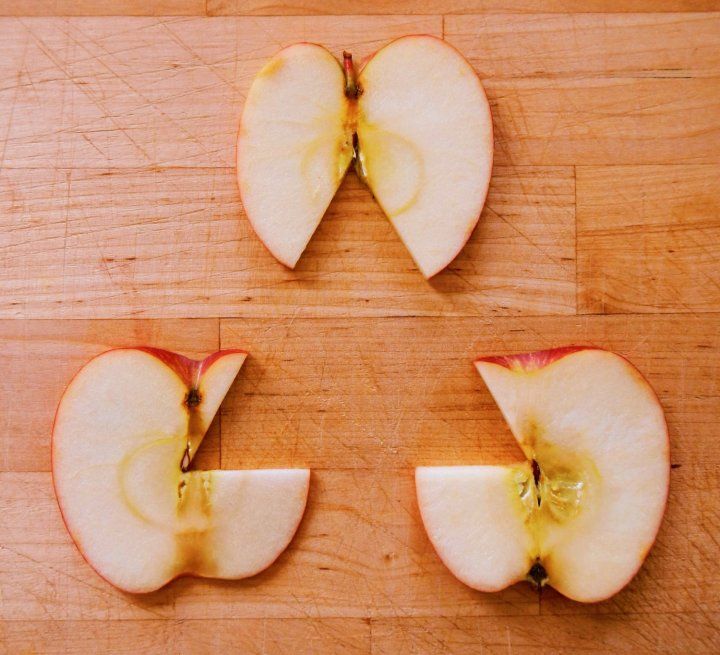Role of Expectation in What We See Is Stronger Than Previously Thought, Study Finds

The brain fills in the missing triangle suggested by these apple slices, illustrating how strongly the visual system is primed to see what's expected.
We hardly notice when there is a speck on our glasses or water on the windshield, because the obstructed visual information seems to be somehow magically filled in. In addition, all of us have a blind spot in our visual field corresponding to the location on our retinas where the optic nerves depart for the brain. There are no photoreceptors in that region to capture light, but you never notice this because your brain seamlessly fills in what you’re missing.
“In a sense, we live in an imaginary world. We don't just see what is out there but what we think might be out there. Neuroscientists believe the brain fills in what cannot be directly perceived by using context from visual cues surrounding the missing stimulus, but exactly how the brain does this remains obscure,” said Andreas Keller, PhD, a postdoctoral researcher in the UC San Francisco lab of Massimo Scanziani, PhD, a professor of physiology and Howard Hughes Medical Institute (HHMI) investigator.
In the visual cortex, where the brain first begins building a picture of what your eyes are seeing, incoming information from the eyes merges with feedback signals containing contextual information originating from deeper in the brain. These feedback signals have long been considered merely “modulatory” – helping shift focus of attention to different parts of the visual field, for instance.
But in a new study in which Keller, fellow postdoc Morgane Roth, PhD, and Scanziani investigated what enables neurons in the visual system to respond to context when a stimulus is not available, they found that feedback from higher-order visual centers in the brain has much more influence over our fundamental visual processing than scientists had ever realized.
As reported May 20, 2020, in Nature, Keller and colleagues recorded activity in individual mouse visual cortex neurons while showing the animals visual stimuli carefully designed to deprive the brain of direct visual information from the retina – much like having a spot blocking a part of the visual field. The team found that when a neuron’s direct sensory input from the retina was missing, the neuron nonetheless responded equally well to feedback signals carrying contextual information originating from deeper in the brain.
“In other words – when there is nothing to see, the brain sees what it expects to see based on the context,” Keller said. “This work adds to a growing recognition of the brain as a ‘prediction machine.’ The simplest neurons of the visual cortex don’t just robotically process whatever data is coming in from the eye, but at the same time are comparing it to perhaps your whole visual life history to anticipate what you expect to see.”